The Ultimate Guide To Responsible Constitutional Carry
December 14 | Posted by mrossol | 2nd Amendment, Personal DevelopmentDec. 14, 2023. Source: The Ultimate Guide To Responsible Constitutional Carry » Concealed Carry Inc
Do you live in a state where no permit is required to carry a concealed firearm? Do you want to carry a gun under your state’s permitless/constitutional carry law and don’t want to get a permit? If so, this guide is for you. This article is basically your constitutional carry class. Free, but a little bit of a lengthy read.
Table of Contents
The Modern Proliferation of Constitutional Carry Laws

During 2022, the number of states with constitutional carry laws increased significantly and as of the time of this writing, 25 of the 50 US States permit concealed carry without a permit. In a 2-year period, more states enabled constitutional carry laws than in the previous decade!
Constitutional Carry, or permitless carry, are terms that refer to the legal ability to carry a concealed firearm in public with no license or permit from the government.
This increase in states with permitless carry laws has led many American gun owners to carry a firearm for self-defense. Most states that have permitless/constitutional carry laws still maintain a permitting system. However, there are reasons someone would choose to carry without a permit, even if they can get one. Some of these reasons may include:
- No need to spend money to take a class or apply for a permit
- Don’t want to be on a database the county or state government maintains of permit holders
- Don’t want to request permission from the government to exercise your constitutional rights
One concern that firearm professionals like myself have is the lack of direction or guidance that gun owners may have when they don’t seek training or education and choose to carry a concealed firearm.
While I feel that the government should NOT require or mandate any training or education in order to carry a firearm, I believe we should be engaged in obtaining training and education in order to reduce risk and because it’s the responsible thing to do.
This article provides a foundation for that education specifically tailored to those who choose to carry under those laws and do not want a concealed carry permit.
For your information, before we proceed, the states shown below in Green currently allow or have constitutional carry laws.
Non-Permit Restrictions For Your State
Each state has regulations that determine where you can take a firearm, how you can have it on you, when you can shoot at someone, etc. These regulations vary significantly from state to state.
In some states where concealed carry without a permit (constitutional carry) is an option, the law puts more restrictions on those carrying without a permit than those who do. So the first thing a responsible constitutional carry concealed carrier needs to know is:
What restrictions exist relating to where and how I can carry that differ from those with permits in my state?
This is especially important because in a local community of gun owners who carry firearms, some may have a permit and some may not, which means they have to play by different rules, at least in some aspects. This creates an environment where many get inaccurate information and act in ways that contradict the law.
For example, in Texas, anyone 21+ who can legally possess a firearm can carry it concealed without a license. But carrying without a permit restricts that person from carrying in college campuses, polling places, and government open meetings among other places. The law does not place those same restrictions on those with a valid Texas License to Carry.
Below we will explore more fully some specific laws you should know and research as well as provide resources where you can research this more carefully for your state.
Gun Free School Zone Act & Its Impact
One consistent barrier you need to be aware of is the Gun-Free School Zone Act. This law, signed in 1990 by President Bush, makes it illegal to have a firearm within 1000 feet of a school unless “otherwise licensed by the state.”
It is important to understand that if you carry under constitutional carry authority; you are subject to this law and may not possess a firearm within 1000 feet of a school. That technically includes driving past one on the road with your car.
Is that likely to be an issue? Are you likely to be confronted by law enforcement within 1000 feet of a school and for them to discover you’re armed? Probably not, but in states with duty to notify law, you’re violating the law if you don’t notify the officer you have a firearm. If you have a firearm in a gun free school zone, it’s a felony, so you should be aware.
Also, be aware that you are exempt from this restriction if you are on private property, not part of school grounds, if the firearm is unloaded and in a locked container, and a few other less relevant exceptions.
RESOURCE: Learn more about the Gun-Free School Zones Act Here
Constitutional Carry “Reciprocity”
Since state regulations vary significantly from state to state, assume that everything will change when you cross state lines into another state.
Some states that have constitutional carry may allow you to continue carrying your firearm concealed even if you don’t have a permit, while others may not. The above map is a good starting point to start your research. You can hover over each state with your mouse for more details, but be aware that some states such as North Dakota only provide the authority to carry concealed without a permit to their own residents.
It is also worth noting that there is a federal law (926A of the FOPA) that protects your legal right to transport a firearm through any state, assuming you’re not prohibited from possessing it where you begin and end the journey; you unload the firearm, it’s not readily accessible, or directly accessible from the passenger compartment, and you have the firearm with you for a lawful purpose.
RESOURCE: Learn more about this law (Article 926A of FOPA) here.
If you want to travel with your concealed firearm to more states than currently allow constitutional carry for residents and non-residents, you would need to get a concealed carry permit.
Responsible Concealed Carrier Shopping List
Carrying a firearm for self-defense is a serious endeavor and requires some minimum gear and tools to do so both effectively and responsibly. Here is a brief shopping list to consider:
-
A concealable handgun with a minimum of 10-round capacity of 9mm or greater caliber
When it comes to the selection of the firearm itself there are endless YouTube videos and articles available to help you in your search. To be brief but to add value I will just suggest a minimum of 10-round capacity to ensure you have enough ammo to survive the vast majority of likely life-threatening encounters and strongly recommend you consider 9mm which has become so popular and prevalent for good reasons.
RESOURCE: Determining What is a Reliable EDC Concealed Carry Handgun?, What is Your Everyday Carry (EDC) Gun, and Why?
-
Name brand hollow point ammunition for defensive use
While hollow point ammunition tends to be too expensive for range sessions, training, and recreational shooting it is the ammunition standard for self-defense in America.
About any brand of hollow points that you have heard of is probably more than adequate. Hornady, Federal, Sig Sauer, etc. You get the idea. Be sure to test fire a box or more of them through your gun just to ensure there are no feeding issues before you start loading that ammo for potential defensive use.
RESOURCE: Why Hollow Points Are The only Option For Self-Defense
-
A quality, quick access safe for emergency staging
Keeping a firearm in your home, not secured or in your immediate and constant control in irresponsible and illegal in some states. When the firearm isn’t on you or in your immediate control it should be secure in a gun safe but if you intend to access that gun safe in an emergency situation then make sure you own a safe that facilitates quick access.
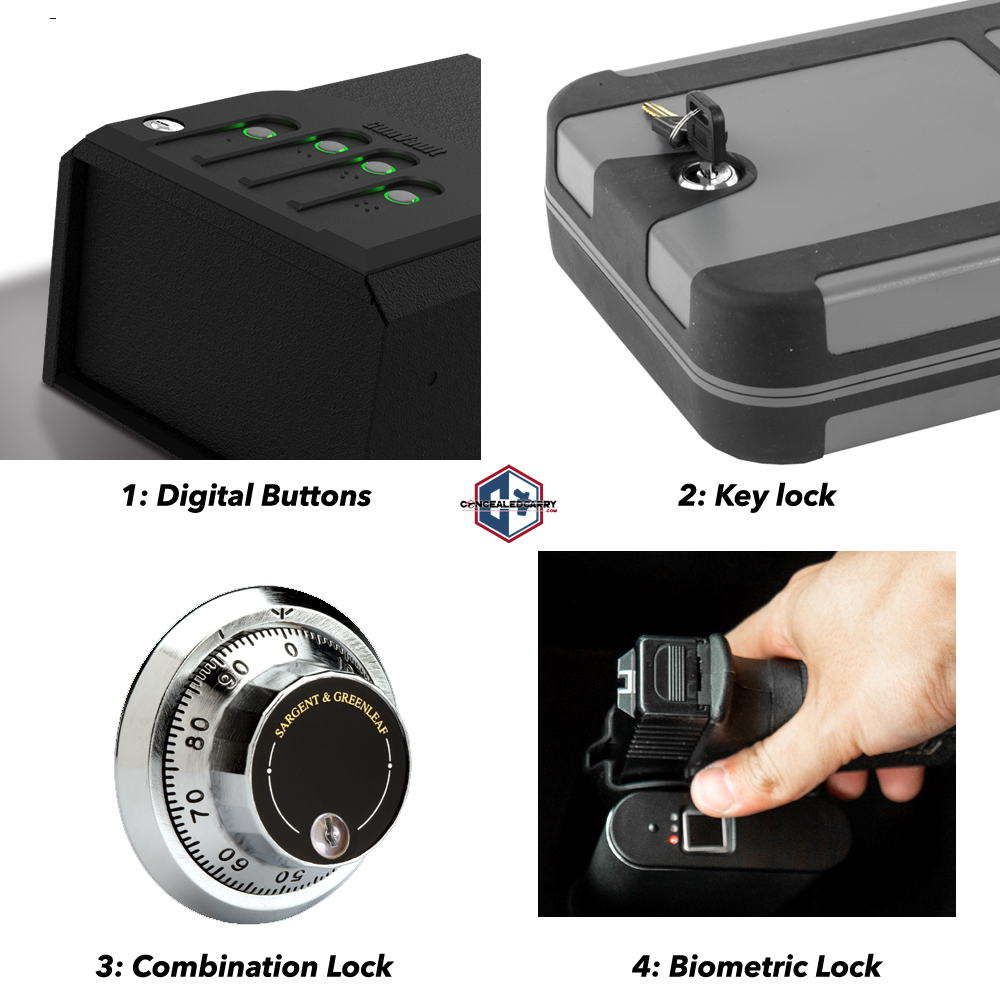
Avoid key locks and combination locks and of course make sure you can secure the safe itself to a substantial piece of furniture, wall studs, or something similar to prevent the safe itself from being stolen.
RESOURCE: Quick Access Handgun Safe Buyers Guide – Locking Styles, Design, and Construction, The Console Vault Safe—An Ideal In-Vehicle Gun Storage Solution
-
A quality holster that meets the 4 Holster Rules
Buying an ineffective, unsafe, or otherwise bad holster is the number 1 mistake we see among new concealed carriers. This is so important and so difficult without some clear direction that there is a section below in this guide dedicated to the topic. More to come on this.
RESOURCE: So You Have Questions About Holster Selection?, 3 Reasons I Prefer a Full Kydex Over a Hybrid Holster
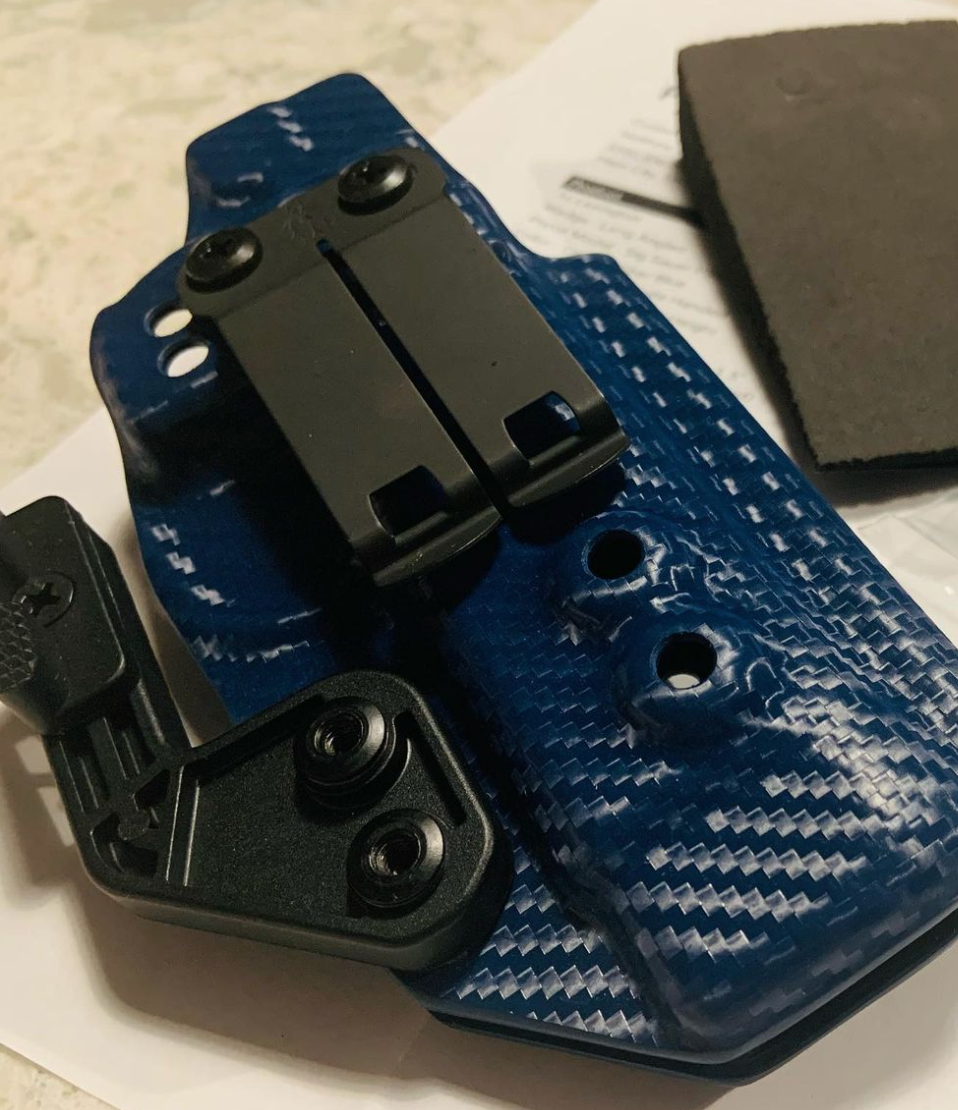
My EDC holster is the Lexington from KSG Armory
-
A range bag to hold all your range-related gear:
You will find that having a bag that is dedicated as your “range bag” will serve you well. Among other benefits, it will prevent you from forgetting to bring any important gear to the gun range.
A range bag that is designed for that purpose will also keep you organized by making it easy to keep glasses, ear protection, ammunition, etc in good compartments and will maximize the amount of stuff you can take to the range as well.
RESOURCE: 12 Beneficial Range Bag Essentials, How to Select the Best Range Bag, and Fill it With the Right Gear
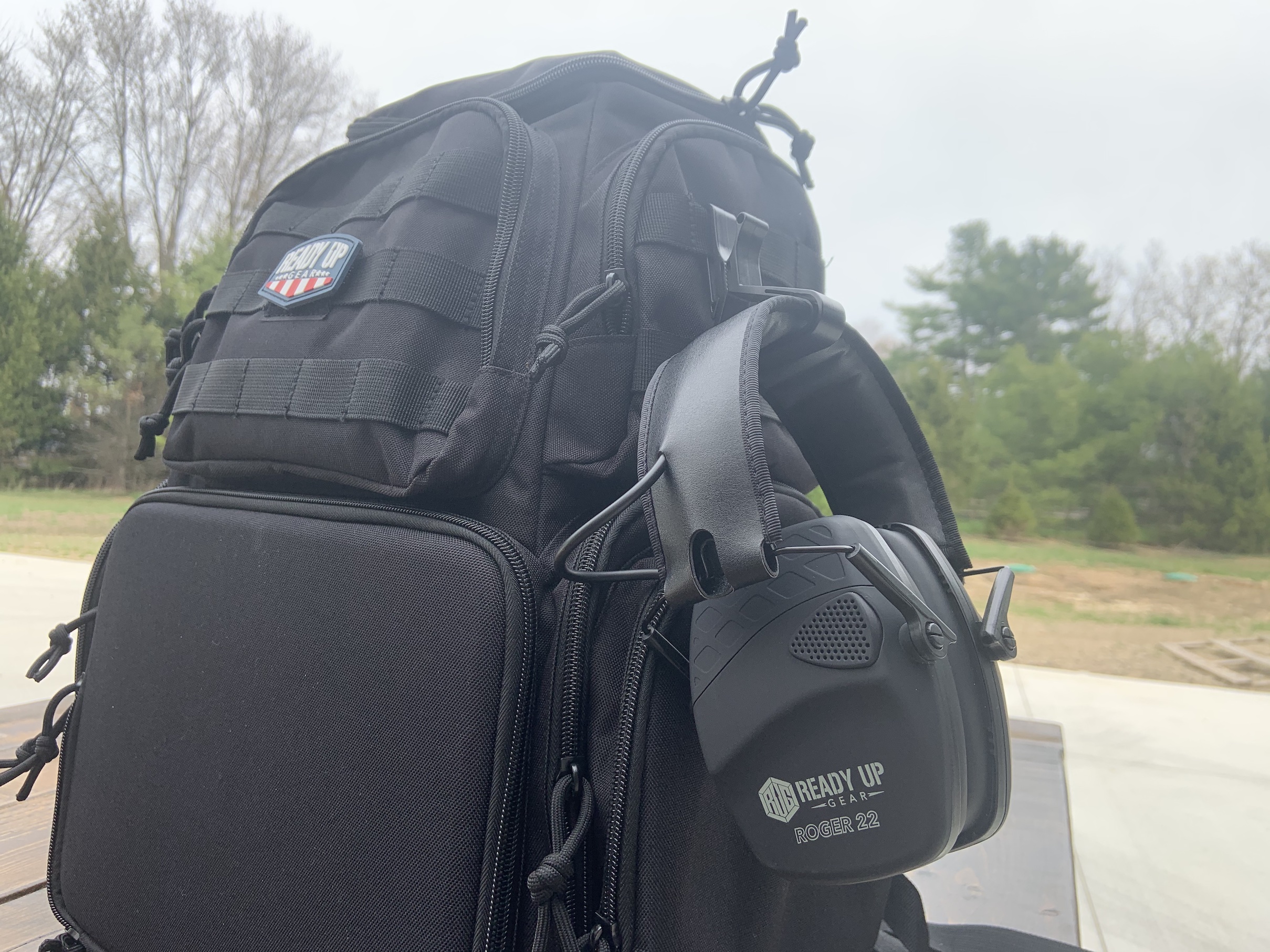
-
Quality safety eyewear and electronic ear-wear
Shooting is an activity that requires safety equipment and among that is safety eyewear and ear-wear. You can find functional eyewear for less than $20 at any sporting goods store or online. As your budget allows I strongly recommend investing in a quality pair of safety glasses. If they cost less than $75 they probably don’t meet the criteria. They should be wrap around with curved lenses (not side shields), should fit your face well to protect from small objects or debris from being able to fall or blow between the glass and the eyes. The lenses should provide good visual clarity and if personally required, be in your prescription.
We strongly recommend electronic ear-wear as it will help you hear human voices while active at the gun range which increases the enjoyment and the safety of the activity.
RESOURCE: 3 Reasons Using Electronic Ear Protection for Shooting is Best, Upgrade Your Old Hearing Protection
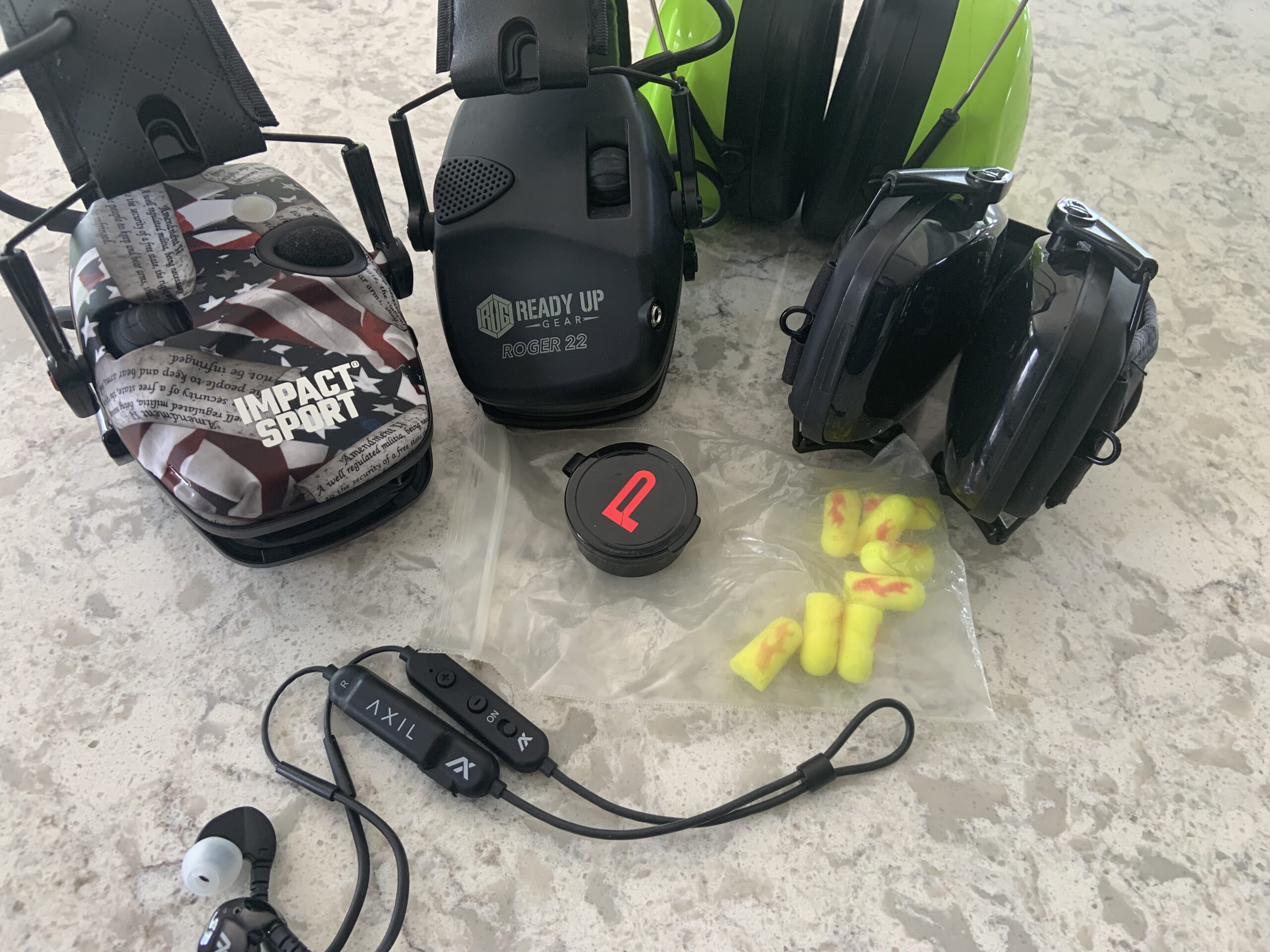
-
Quality trauma kit with a minimum of a tourniquet, chest seals, pressure bandage, and hemostatic dressing
In addition to safety eyewear and electronic ear-wear a responsible concealed carrier has a trauma kit and knows how to use it. Certainly, there is the obvious reality that should you find yourself in a gunfight the odds of needing emergency medical supplies and gear to patch up holes in yourself or those you care about are relatively high.
However, also consider that the reason you carry a firearm is to ultimately save lives and you are much more likely to find yourself in a life-and-death situation in your lifetime in which a trauma kit is the requisite tool to save a life rather than a firearm.
You can take a no-cost online video class that will give you the skills and then you just need to find a quality trauma kit.
RESOURCE: Picking the Trauma Kit For You, The Important Distinction Between A First-Aid Kit and A Trauma Kit,Reminder: First Aid Gear Is Essential For EDC
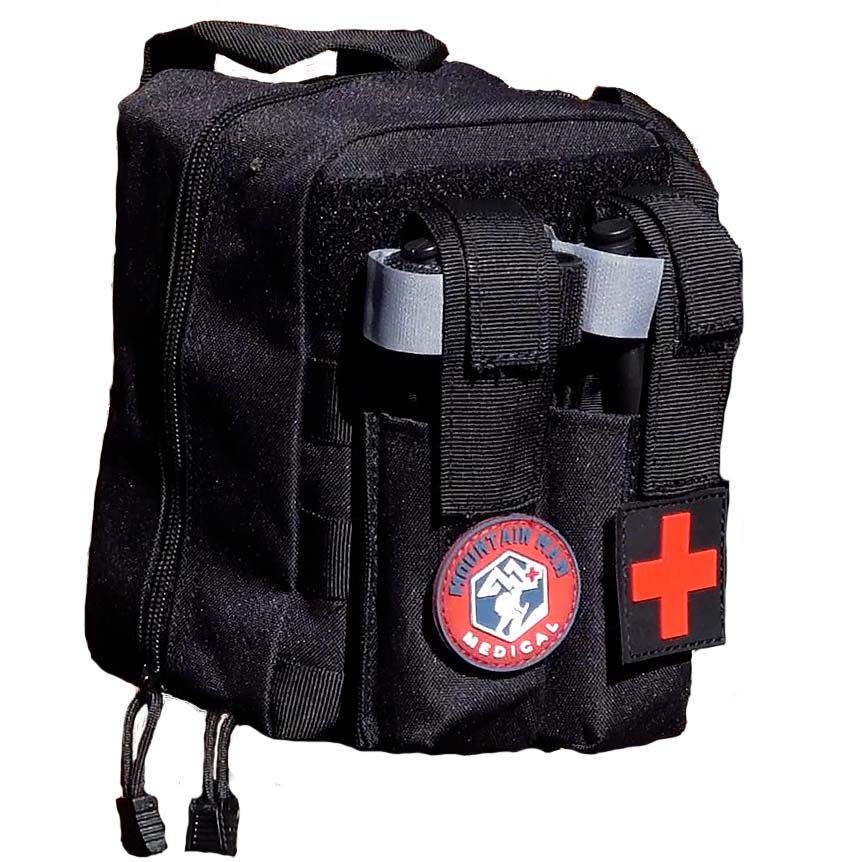
-
Quality handgun cleaning kit and lubricant and cleaner
Being a responsible gun owner means performing the important ongoing maintenance of your firearms which is the cleaning and lubricating of those firearms. Long term maintenance like replacing parts etc should be handled by a gunsmith.
Clean the gun often and lubricate it even more often.
RESOURCE: no-cost online video class, How Often Do You Clean Your Guns?
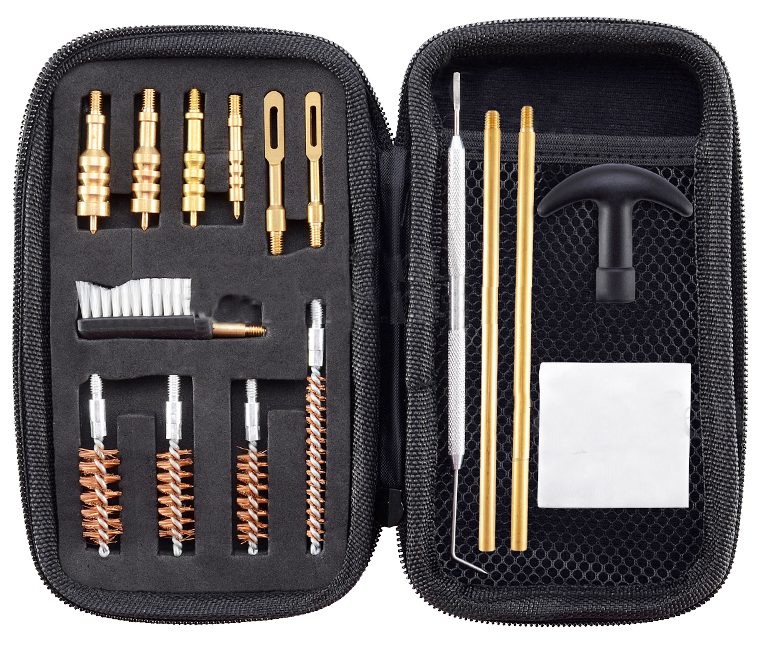
-
Pepper Spray
At the risk of being too bold, I find it irresponsible or at least naive to carry a gun and not pepper spray. The firearm is a potentially deadly tool that can be an appropriate response to potentially deadly attacks. However, most of life’s threats and attacks are not deadly in nature and a firearm would be an inappropriate, illegal, and unethical response to most of those.
When all you have is a hammer, everything looks like a nail and so in addition to carrying a firearm responsible concealed carriers carry pepper spray which is generally considered the best less-lethal option for everyday citizens. Carry it on you and buy and practice with some inert pepper spray as well so you can be familiar with the operation and use of the tool.
We strongly recommend POM or Sabre products.
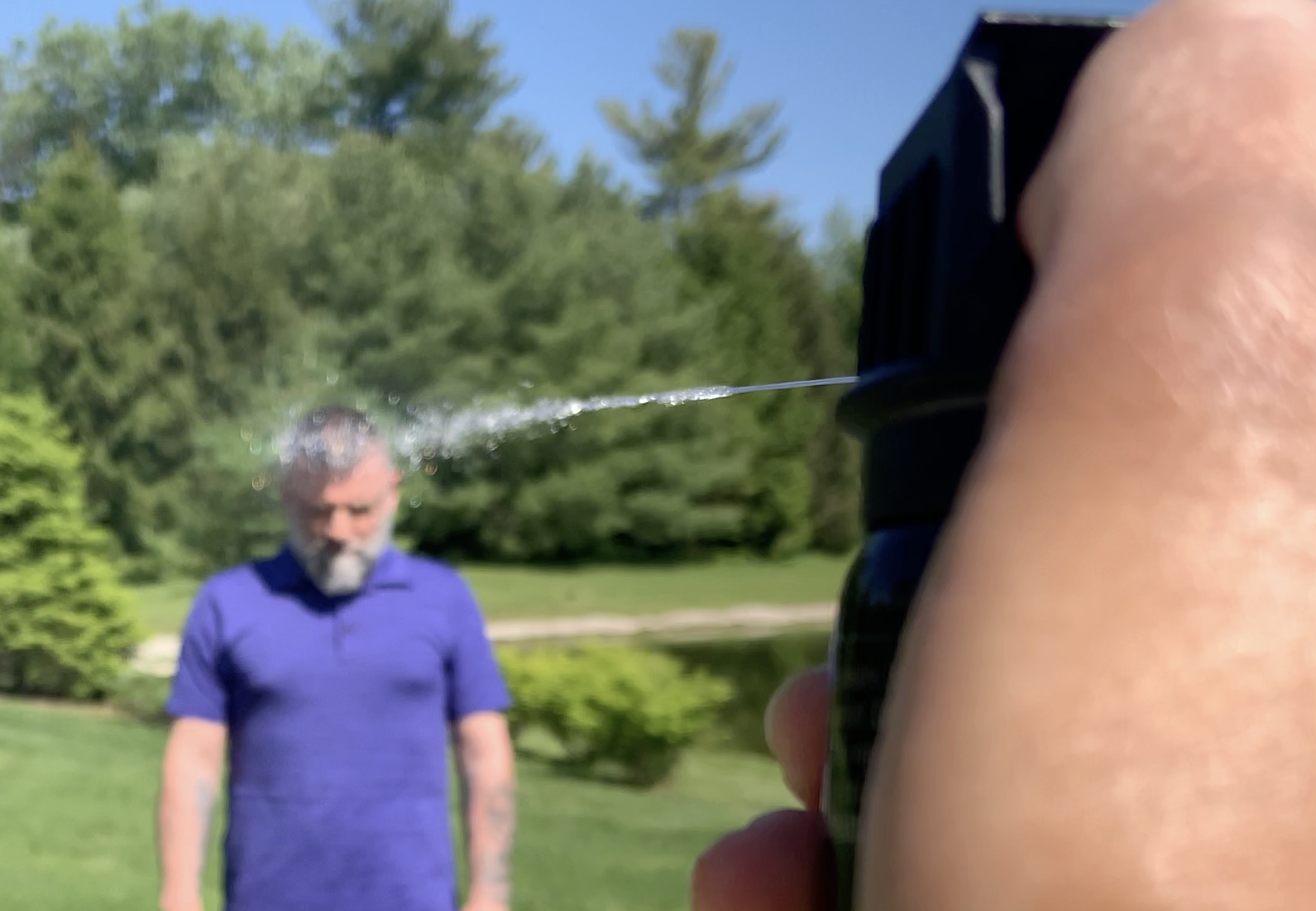
-
Quality high-output flashlight
A quality flashlight serves 2 obvious purposes for self-defense. First, it gives you an effective way to identify targets. It is irresponsible to point a gun at something if you haven’t verified that it is a potential target. Shapes, shadows, and sounds in your kitchen may be an intruder with deadly intent or it could be your child or mother in law. A flashlight might be the best tool to answer that question in and outside the home.
Second, a flashlight can be its own self-defense tool. A high-output flashlight can effectively blind an attacker or potential attacker buying you enough time to evade or make other decisions.
RESOURCE: Self Defense Techniques: Using a Handheld Flashlight, Handheld VS Weapon Mounted Lights Which 1 is Better?, How Do I Use a Handheld Flashlight and Handgun at The Same Time?
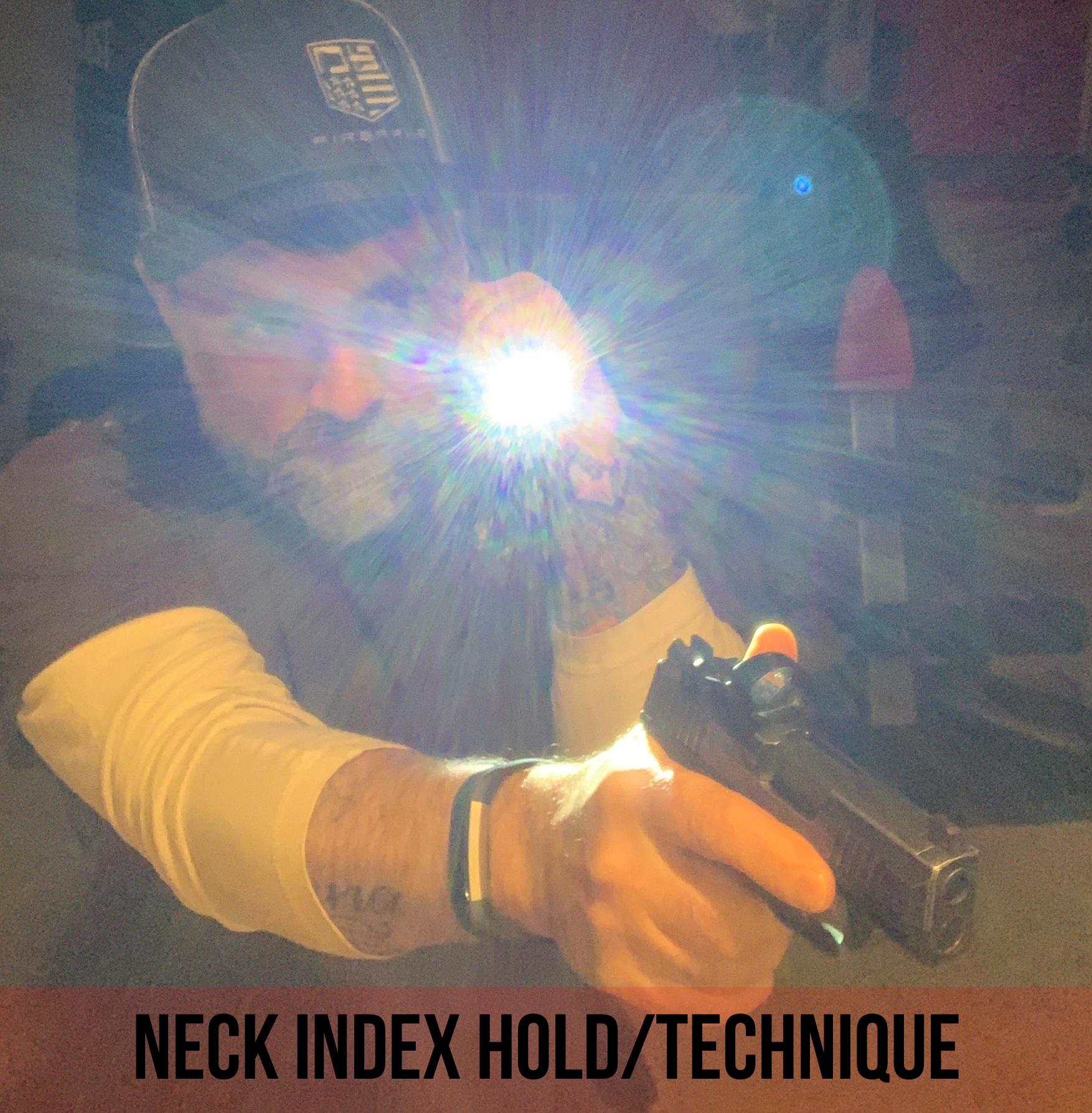
The neck index technique is used because it is an intuitive position to fight from. The light can move independently of the muzzle, making it great for searching.
Introduction to Holsters and Concealment
As mentioned above, in my experience the biggest mistake that concealed carriers make is in buying a poor-quality holster. This is why the top experts in our industry have established some holster standards.
There are roughly 4 of these standards and I generally call them the “4 Rules of A Good Holster.” They are as follows:
Rule 1: The holster must fully cover the trigger guard in such a way that prevents anything from entering the trigger guard and accessing the trigger. The most common way holsters fail this rule is first to expose some of the trigger guard. If you can see into the trigger guard or if you could take a pocket knife and stick it into the trigger guard and press the trigger all while the gun is in the holster that is a failure of rule 1.
The second common failing of rule 1 is to cover the trigger guard with a material that is too soft and would allow a sharp object or even your own finger to press through or into the material in such a way that you could access and press the trigger.
Rule 2: The holster must retain the gun sufficiently for normal daily activity and only allow the gun to leave the holster when the user intends it to. Simply put it is a safety issue if your firearm can come out of the holster when it shouldn’t. How do you verify?
BarrelBlok the gun (or otherwise clear it and ensure it is inert and clear) and hold it upside down in the holster. If you hold the holster and give it some gentle shake does it fall out? It shouldn’t. If that feels a little too unnerving you can put the gun in the holster on your body and do some aggressive jumping jacks and dance moves. Does the gun come out of the holster even a little? It shouldn’t.
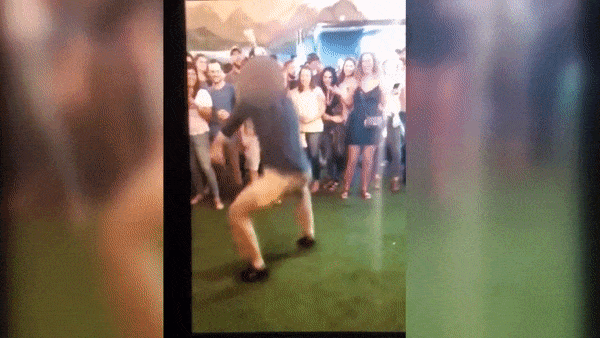
Some holsters have adjustable retention so you might solve the problem by tightening some screws but bear in mind that if that is the case you should apply threadlocker (like Loctite) to those screws to keep them from backing out on you and jeopardizing your otherwise good retention.
Rule 3: The holster must retain itself to the body or bag when the gun is drawn. Simple sounding right? When you draw the gun, the holster should stay in its place and not come with the gun and part of that is that the holster should be available to you for an easy and safe reholster when that time comes.
Since most holsters attach to the body via clipping to the belt this tends to be a question of the quality of the clip(s) and the belt. A large majority of concealed carry holsters are sold with junky clips that slip off the belt easily. There are good clips out there being made and sold by quality holster companies.
To test put on the holster and then try to remove it by twisting it side to side and working it up and off the belt. If you can get it off that’s a fail. Sometimes even a quality holster with quality clips can fail in this regard if your belt sucks. This is why a good quality concealed carry belt is worth investing in.
Rule 4: The holster should present the firearm to you in a way that you can get a full and good grip on the gun from the holster draw without having to make any adjustments to your grip on the gun before you present it to target.
There are two common ways the holster fails this rule. First, the holster may have holster material under the trigger guard that prevents the fingers from gripping correctly and snugly under the trigger guard.
Second, the holster may ride the firearm so low in the pant line that your own pants and belt get in the way of acquiring a good grip. That could be because the ride height is too low or because there is so much “play” in the holster on the belt that it effectively sags down on the grip side of the gun and rests against the top of the belt during the course of a day.
While the 4 rules are all dealbreakers it is worth noting that you might buy a holster that does meet those 4 criteria but not like it or find it comfortable for you. That happens.
For that reason, I generally suggest that rule #5 is to make sure you can return it for a refund if you don’t like it.
RESOURCE: 4 Deal Breaking Criteria for Holsters, And Why the Majority of Holsters Fail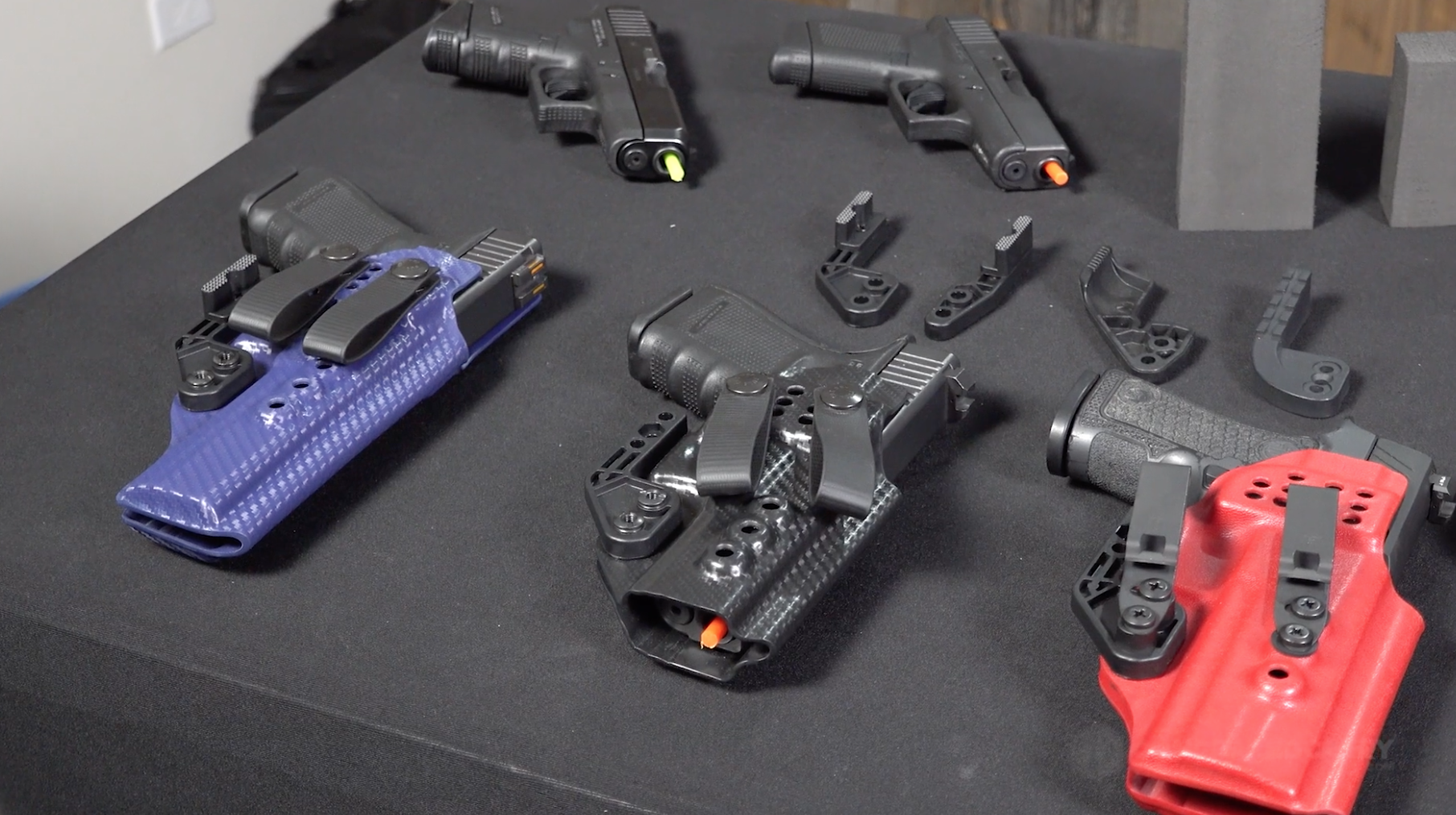
What Laws You Need To Know and Where to Research Them
Earlier in this guide, we discussed in some detail non-permit restrictions, school zones, and the concept of reciprocity and traveling into other states.
Gun laws, the laws that regulate the possession of guns, gun parts, and ammunition vary significantly from state to state so while I can’t directly provide you with a list of the local laws you need to be aware of I can tell you what laws to look for and where to find them for your state.
Here is a list of laws that vary by state that I think anyone carrying a firearm outside the home should be familiar with:
- Open Carry: What is it and are there potential legal consequences?
- Do I have a duty to notify law enforcement if I’m armed and confronted?
- Can I carry into State Parks or National Parks in my state?
- Can I carry into restaurants that serve alcohol?
- Can I carry on public college campuses?
- Can I carry at church or a house of worship?
- Can I carry or be in possession of a firearm in a hotel?
- Are there magazine capacity limitations?
- Are there suppressor limitations on ownership or use?
- How uniform are the gun laws in my state? Do they vary by local jurisdiction?
- What other places are off limits to carry or firearm possession?
The fastest place to research these laws? Right here on this site. Click here or click on “Laws” in the above site menu and then click on your state for a summary of all the gun laws in your state. For a more convenient mobile resource, you can download our free appwhich also contains the same up-to-date information.
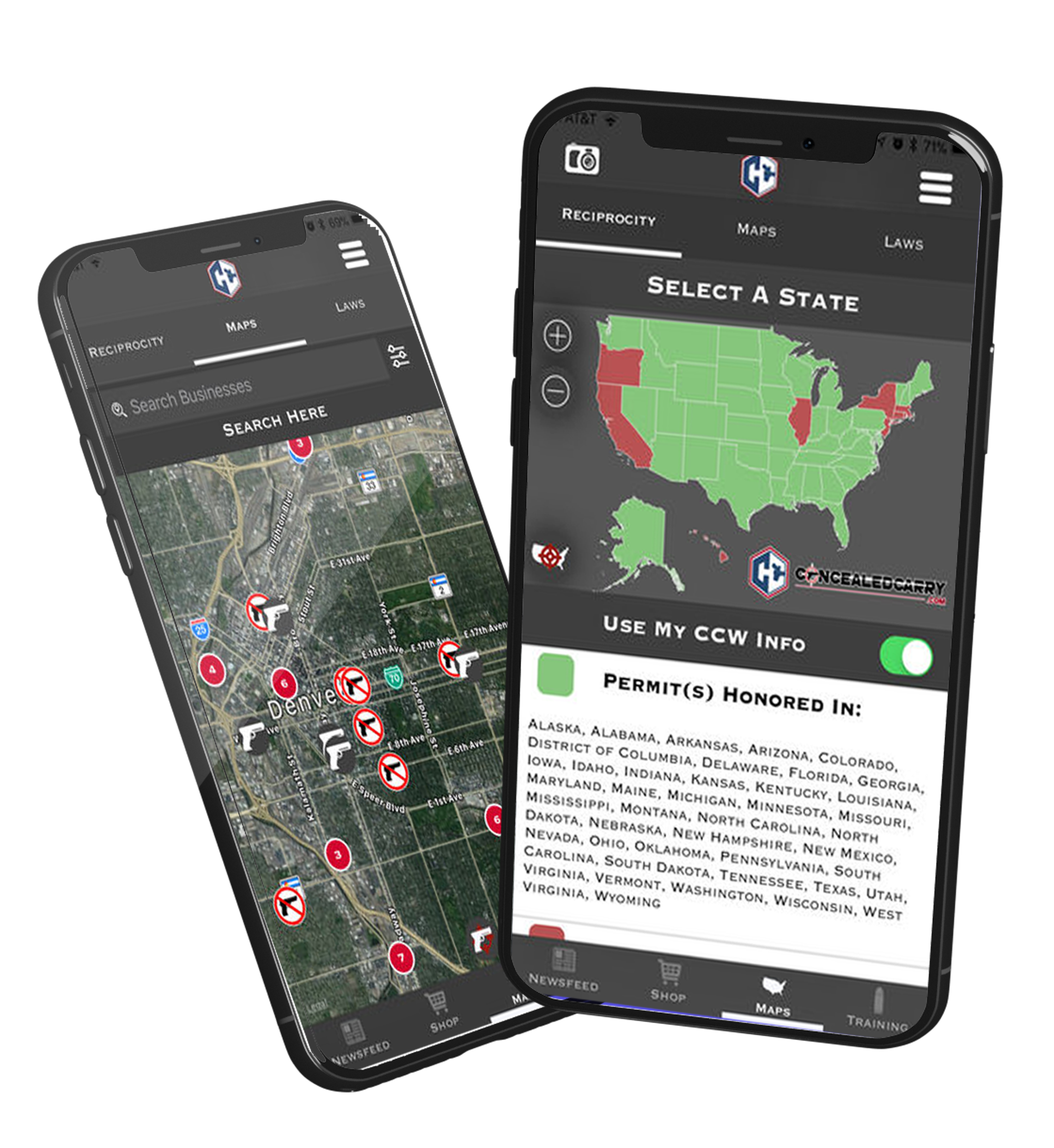
When Can You Shoot Someone
In summary, you can use your firearm in self-defense when you are an innocent victim facing an imminent threat of death or serious bodily injury. In some states you are also restricted to only defending yourself when you have no safe means of retreat. This idea is generally referred to as a “duty to retreat” and you can find out if your state has such a requirement in the same law resources linked to above.
Now there is some “devil in the details” as it relates to the underlined sentence above. What constitutes innocent, imminent, or serious bodily injury for example? Some of those terms and understanding the fully is outside the scope if this guide but additional education is encouraged.
RESOURCE: American Gun Law

What Class Should You Seek Out Next
Responsible gun ownership means a lifetime commitment to being more prepared and more capable. While you are not bound by the law to seek a class to carry concealed in a state with constitutional carry laws you should proactively be considering your next step in your education.
In the very least you should get quality training so you’re able to use the handgun effectively. Simply carrying a gun doesn’t make you impervious to injury or death. Consider the practical differences between open and concealed carry.
Given the significant variance of options available from one local area to the next I’m going to speak generally to a few different options you can look for.
Class at a local gun range. Local gun ranges near you almost certainly have in-house instructors on staff that teach a variety of classes. Some of these instructors might be quite capable and experienced though in my experience that isn’t always the case. Indoor gun ranges are restricted in the type of training that can provide and so you don’t tend to find a lot of defensive shooting or “advanced” training options at an indoor gun range. Regardless it is a fine place to start a journey.
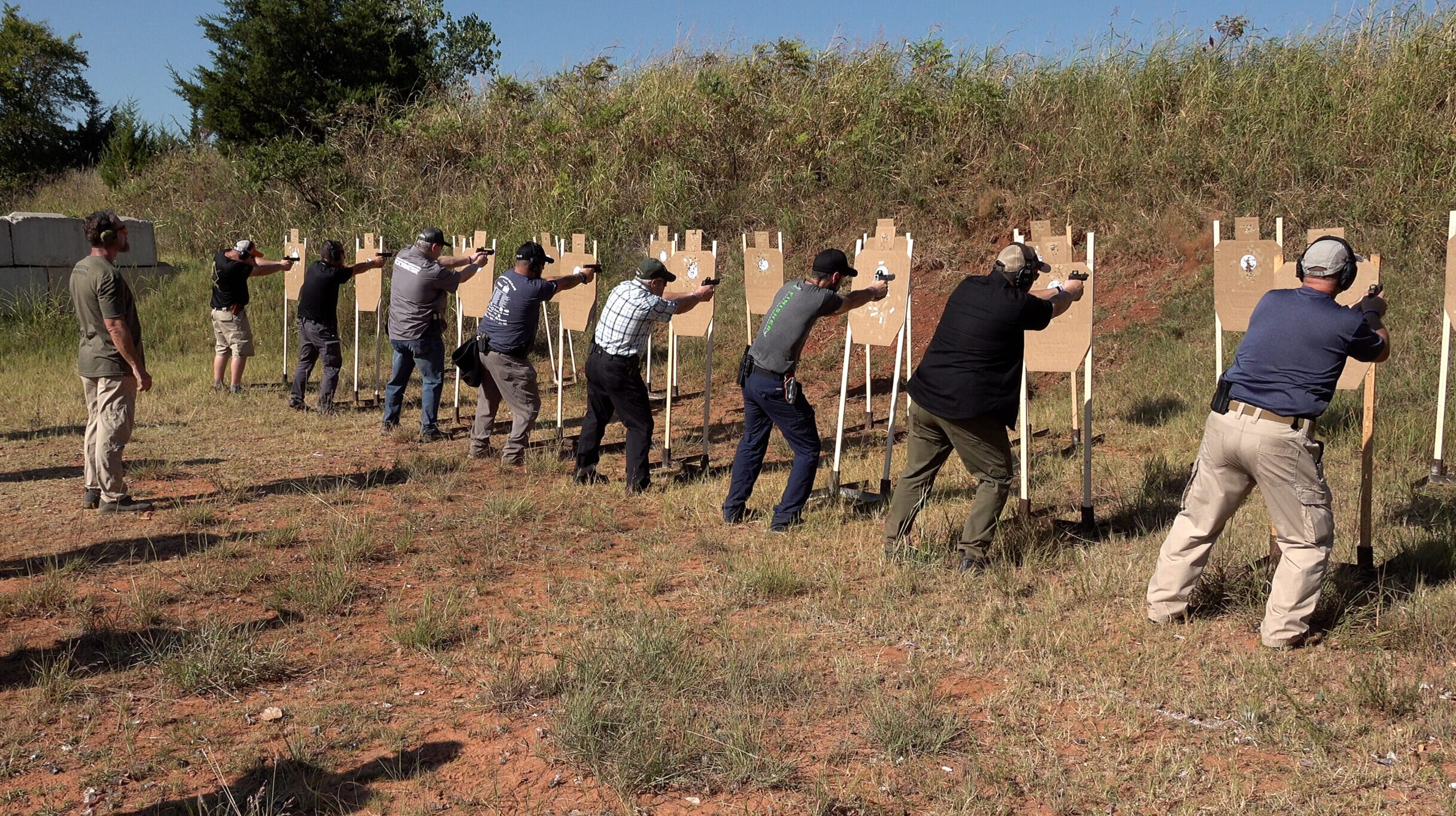
Independent and Top Tier Trainers. Some of the best and most in-demand firearm trainers in the country are independent of any specific gun range and may sell and advertise their services on their own websites. Many of these travel around the country and others tend to operate out of a single local market. Finding them and their classes is more difficult but if you ask around and talk to enough people in your area you are likely to get referred to one of these trainers.
Events and Conferences. The civilian firearm community hosts a number of firearm training events and conferences that represent great opportunities to get access to amazing training from top instructors in a non-traditional class format. As an example, you can check out the annual Guardian Conference hosted centrally in the country each fall which is a very affordable way to get top-tier instruction and significantly progress your education in a single weekend.
While reading this article hopefully was a valuable overview of responsible concealed carry it is just an overview and your, and mine own, next step is to find the next class or training that we need to progress ourselves forward to being a more prepared and capable gun owner.





Leave a Reply
You must be logged in to post a comment.